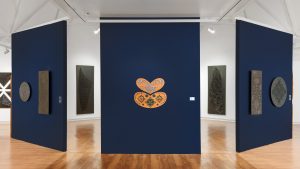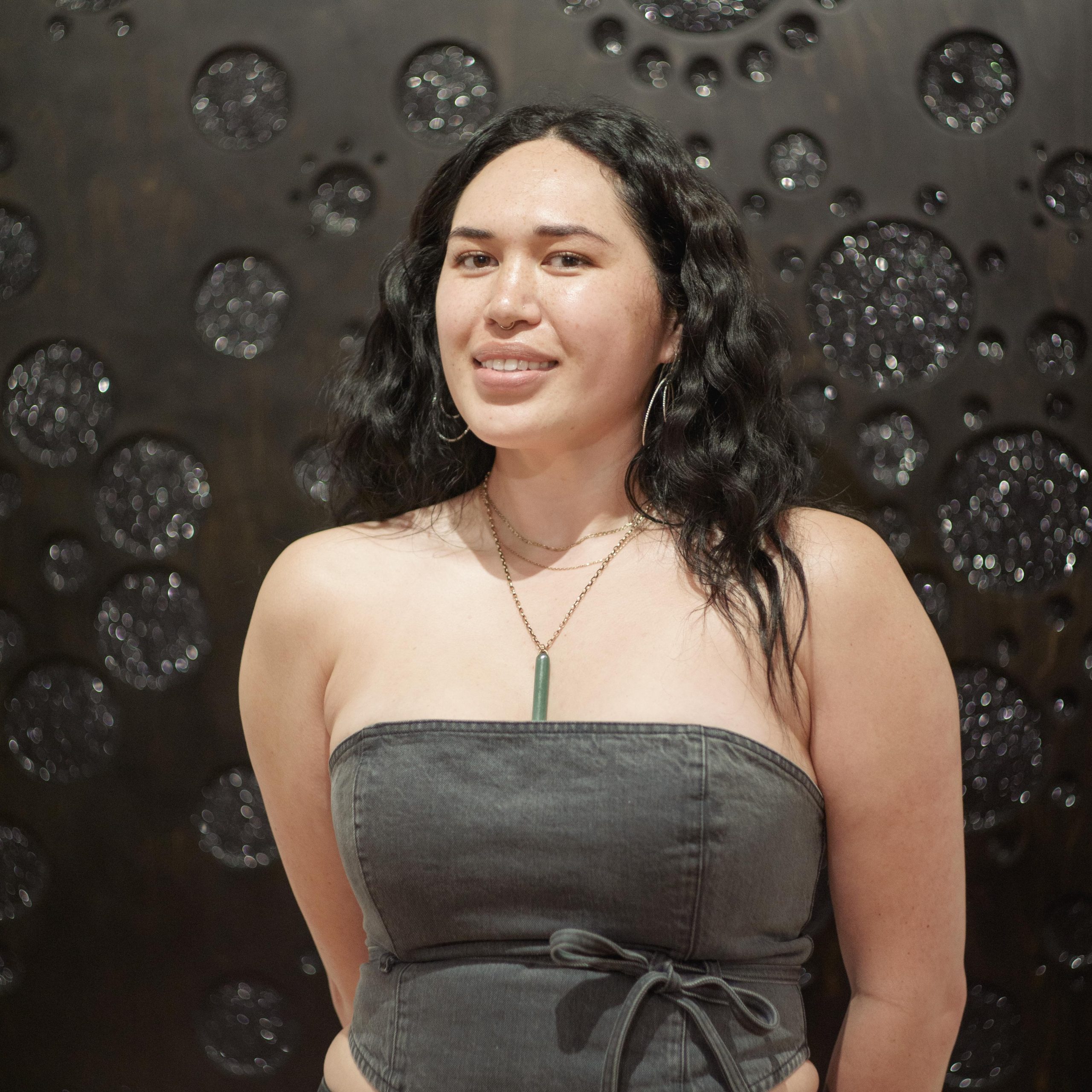Exploring the interconnectedness of whakapapa through art, Maioha Kara’s work draws on both personal legacy and broader cultural narratives. Currently featured in a solo exhibition at Hastings City Art Gallery, Maioha discusses how she uses materials like timber and glitter to honour her father’s legacy, reflect on Māori cosmology, and explore the rhythmic energy of te taiao. Speaking with Aotearoa Art Fair, she shares insights into her creative process, her ongoing evolution as an artist, and what she hopes visitors will take from the exhibition.
____________________
Through your practice you explore interconnectedness. Can you explain how this concept shapes the way you approach your work and materials?
The concept of interconnectedness is almost incomprehensible, I often use whakapapa as a conceptual gateway as it provides a gentle way in. In terms of materials and making, my father is a pukenga toi (an expertly skilled arts practitioner) so it was natural for me to reach for timber when it came to making work (I have used timber for more than seven years now). Working with this material not only connects me with my Dad, but of course timber is also a living material that embodies a sense of time and interconnectedness. Glitter is the other pronounced material in my work, employed to suggest our cosmological link to te whānau marama. I like to consider the ira (spots) across the surface of my work as vessels of light energy or mauri.

Image: In Good Relation: Maioha Kara, Māhanga, 2023, Te Whare Toi o Heretaunga Hastings Art Gallery
How does your father’s artistic practice influence your own, and in what ways do you see your work as a continuation or evolution of his legacy?
Being from Rotorua, where it is accepted that wāhine Māori don’t carve, it wasn’t something I actively considered as a possibility for myself. When I began art school however it wasn’t long before I became interested in working into the surface and surprisingly, I didn’t consider it to be a sculptural intervention. All my life I have been surrounded by whakairo and sculptural objects, a normalised privilege largely due to my Dad. Retrospectively the influence of his work (and other members of our whānau) is so abundantly clear when I look at my own work and in this way, I see my work as an evolution of his legacy. My father is incredibly adept in his work, I hold it as my personal standard of excellence.

Image: In Good Relation: Maioha Kara, 2024, installation view at Te Whare Toi o Heretaunga Hastings Art Gallery
In your practice, you reference Māori and Kuki Airani art forms like whakairo rākau and tīvaevae. What is something which inspires you about these art forms which you bring into your own work?
One of my favourite things which can be found within Māori and Kuki Airani art forms alike is this incredible sense of rhythm and liveliness. When looking at the whare whakairo, for example, and the shift of hand placement on the poupou, I see how subtle changes contribute to a sense of movement and that this emphasises the animate nature of the whare. Employing subtle variation and playing with symmetry and asymmetry is something I do a lot in my own work to build rhythm, gently asserting the notion that stillness/stasis do not exist in te taiao and that this is something to be celebrated.
Image: In Good Relation: Maioha Kara, Whakatā, 2024, Te Whare Toi o Heretaunga Hastings Art Gallery
What do you hope audiences take away from experiencing the exhibition?
The relational worldview held by te ao Māori is something to be cherished and shared. I hope that in visiting In Good Relation, audiences get a sense of this way of interacting with others and te taiao, taking away with them a sense of optimism and hopefulness.
___________
‘In Good Relation: Maioha Kara’ runs at Hastings City Art Gallery until 29 March 2025. Maioha Kara is represented by Laree Payne Gallery in Aotearoa New Zealand.

